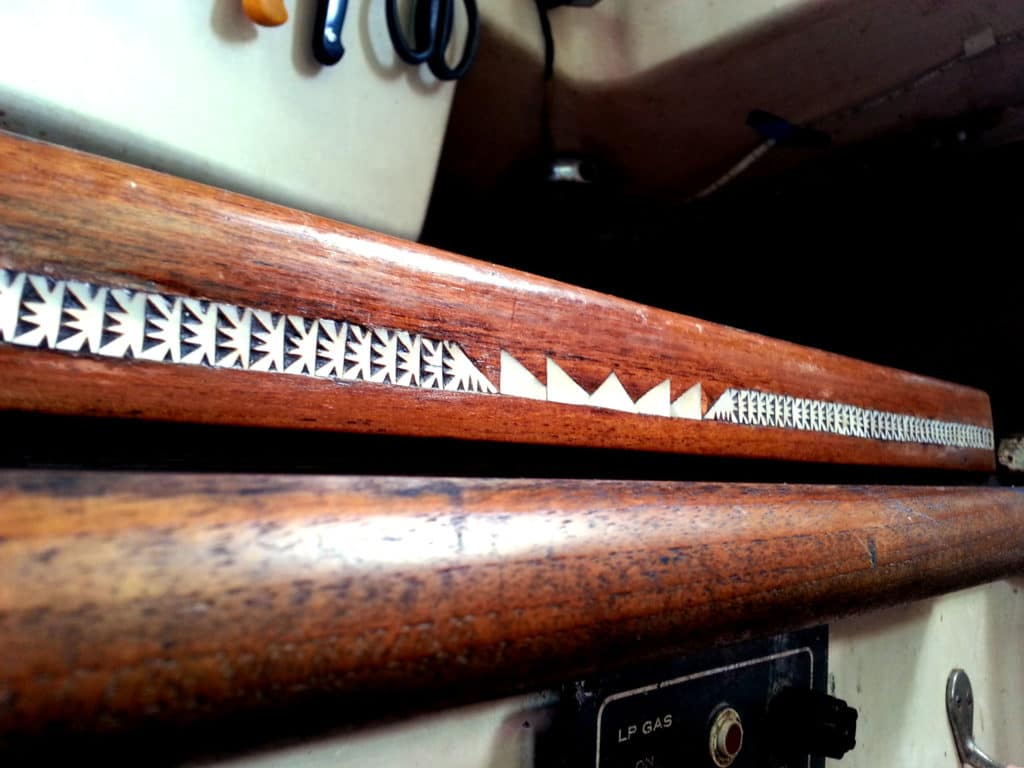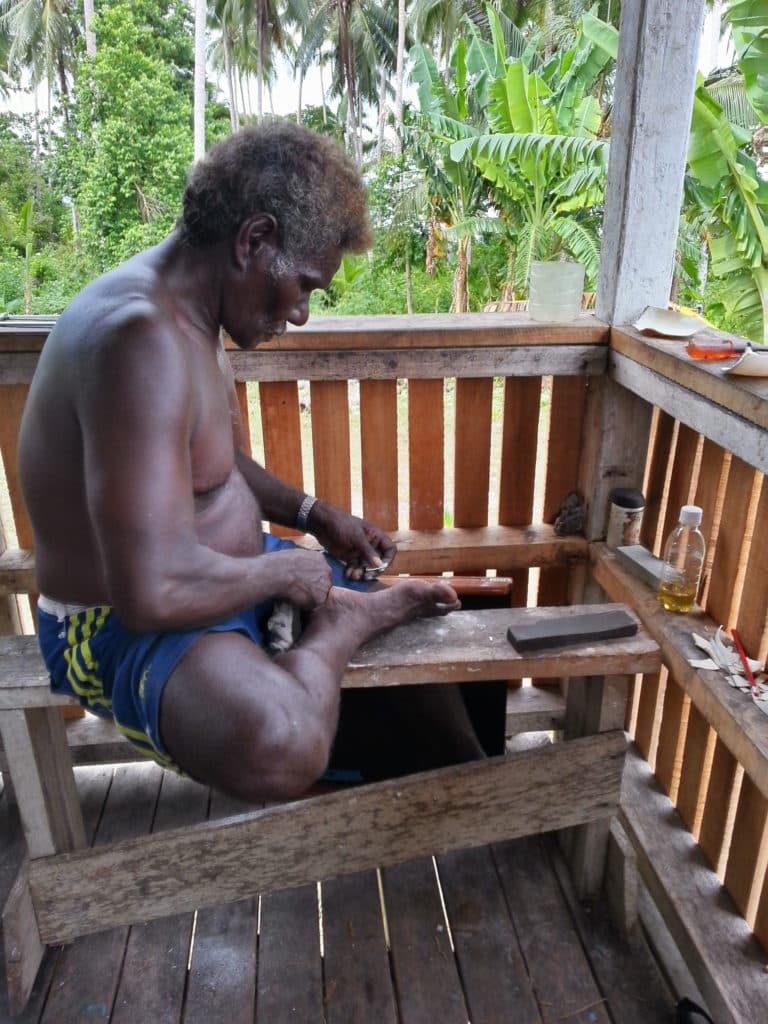
Long before we arrived in the Solomon Islands, Steve and I heard about the carvings: beautiful bowls, seductive sea-creature figurines and menacing masks, all hand-carved from local hardwoods and decorated with intricate mother-of-pearl inlay. It sounded lovely, but as I looked around the small cabin of Kate, our Newport 41, I knew there was no place for such souvenirs.
Ever the ideas man, Steve came up with a plan. What if, instead of buying carvings, we got a tradesman to do inlay on some existing woodwork on board Kate? I thought it was a great way to commemorate our time in the islands; we could enjoy our souvenir every day instead of stowing it away for special occasions. It was decided that the original teak trim on the galley countertop was the perfect candidate for our experiment.
A few months later, among the usual knickknacks on display ashore, we found a very unusual piece: a wooden fishing lure. Attention had been paid to the fine details and the finish work, two aspects often overlooked. We asked the carver if we could look at the rest of his work and were further impressed. We bought the fishing lure and asked him to come out to the boat to discuss our project.
Erol was quiet and thoughtful as we explained our ideas in a mix of English and Solomon Island pidgin. We discussed supplies needed and the number of nautilus shells required. He gave us a price and a time frame to complete the work, but still seemed reticent. When I mentioned that all the trim could be removed and taken ashore, he thrust out his hand to seal the deal.
I wandered up to Erol’s house the next day to find him busy at work. I sat for a while and watched as he held the piece of shell against the sole of his foot and, with a few quick strokes of a small file, custom-shaped the nautilus shell. After a few inches, the bits of shell were glued in place and the process began again. He was focused and precise, a true artisan at work.
A week later he paddled out to Kate to deliver the last piece of trim. I invited him down below to inspect the work that had already been installed. It was the first time a boat owner had asked him to do custom work. When I asked him if he was happy with the job, he gave a shy smile and nodded, his eyes full of pride. And that is the memory that is etched not only into our minds, but into our countertops, too.

Tips for working with Artisans
From textiles and woven goods to carvings, in every place we’ve sailed, people are making and selling traditional handicrafts. Commissioning local artisans to make specialty pieces or do custom work on board not only changes your living space, but it might also change someone’s life.
In 2011 we visited Lape Island, Tonga, where the villagers were making beautiful woven handicrafts and investing the profits from the sales back into the community. When we returned in 2013, the people had raised enough money to build a concrete jetty, pave a walkway across the muddiest parts of the village, and pay for all the village children to go to school. We asked them to weave a mat large enough to be installed as a headliner on board Kate.
Working with local artisans is rewarding but does require some planning. Give yourself time to research the local handicraft scene so you get an idea of the styles and quality of goods being produced. Doing so will also give you an idea about what would be considered a fair price for the work commissioned. And most of all, make sure you have ample time to allow for the inevitable “island time” hiccups.
— Heather Francis








